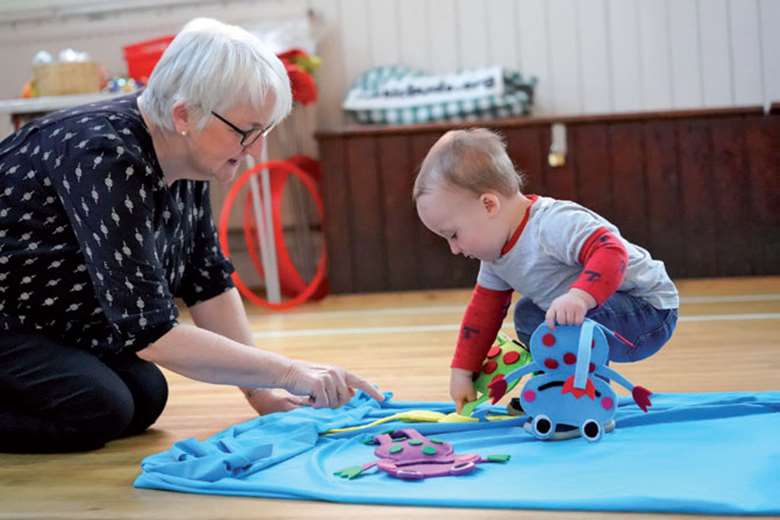Q&A: Clare Seymour
Monday, July 1, 2019
Clare Seymour is one half of the duo behind Musicbuds, which produces a wide range of learning resources for use at Early Years. In addition to being an accomplished musician, she also holds degrees in psychology, and a doctorate from the Institute of Education.

Stephen Waller
What was your introduction to music?
I was fortunate to be at school when music education was a valued part of learning. Through primary school I attended professional Saturday morning children's concerts staged in the local concert hall. As soon as I saw an orchestra in action, I knew I wanted to be a part of it – seeing all those musicians working together to create beautiful music just blew me away! When I got to senior school, I had free instrumental lessons. There was no choice of instrument – I was assigned a flute – and then the rest is history! I had the opportunity to join wind bands, orchestras, other borough's ensembles, and gradually worked my way up to principal flute and piccolo player in several of them. After I finished school, I studied at Guildhall and eventually realised my dream of becoming a professional player. I am so appreciative of having experienced terrific music-teaching as part of my education.
How did Musicbuds come about?
I was teaching class music in an international school where I met Anna Clow, an Early Years (EY) teacher. We soon realised we had much to learn from each other regarding teaching our respective specialisms so we began to team-teach. From Anna, I learned how to manage the behavioural and experiential aspects of teaching while she observed how I moulded and improvised the children's everyday experiences into songs that incorporated the basic rudiments of music and musical creativity.
We then began to collaborate. For example, Anna would say ‘I need something with a strong rhythm in preparation for teaching the children to read’, and I would then compose a song. In this way, we managed to create a holistic musical approach to teaching to EY – one which combined musical elements with the Early Years Foundation Stage learning objectives. While I was able to facilitate Anna's class-teaching through music, she helped me to create seamless, enjoyable, and inclusive music sessions for all the children. This is how Musicbuds was born.
News of our collaborative approach then spread. We were invited to run weekend community sessions and our material just grew and grew! Through a ripple effect, other teachers requested to use our songs and we were increasingly asked to provide INSET sessions. We soon realised that we needed to formalise our resources in order to make them more readily available. This had to wait until I'd left teaching full-time, so that I could devote adequate time to transcribing all the songs. We now have a variety of Music Packs and props available.
What's your approach to EY pedagogy?
Whatever pedagogy is used, it has to be enjoyable and engaging to both the teacher and the pupils. If you don't enjoy teaching it, the children won't enjoy learning! As a result of many years’ research alongside my teaching (my doctorate is in the psychosocial aspects of young children's musical development), Musicbuds’ draws on an eclectic mix of pedagogical approaches including Orff, Kodaly, Dalcroze, Nordoff-Robbins, Froebel and Reggio Emilia – to name just a few!
What role do you think music should have in society?
Music has permeated society from the very beginning of time. It is magical. It has the power to transform lives. Rather than being pushed to the fringes, I believe it should be central to every child's daily lived-experience. It is so much more than just singing a song or playing an instrument. It is inclusive, physical, intellectual, social, creative, expressive, challenging and comforting. It teaches self-discipline, motivation, resilience, tolerance, understanding, and empathy, and it embraces cultures, genres, styles and knowledge exchanges right across the world.
How does Musicbuds fit into that vision?
Firstly, our sensory activities have been carefully crafted to provide implicit musical training. They are musically accessible to EY in terms of pulse, rhythm, pitch, dynamics, tempo, genres and styles. They use simple language, actions and concepts in order to stimulate curiosity, motivation and collaboration. Our songs are musically provocative! Because the materials were developed organically through our own musical interactions within EY, we know they provoke expressive, musical, and creative reactions from the children.
Furthermore, teacher-feedback suggests that one of the most important strengths of our songs is that they are enabling: for musicians they provide a deeper understanding of what EY learning looks like, and for EY practitioners they allow them to adopt music as a vehicle for holistic learning and cognitive development.

